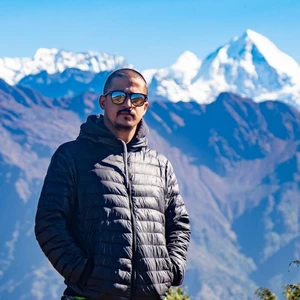As you prepare yourself for the Everest base camp trek, you will take a great deal of time choosing your gear, reading up on altitude sickness, and getting in shape. You’ve seen the websites mention Khumbu cough, but with your mind preoccupied with seemingly endless other information, you are bound to forget about it. So, what is Khumbu cough and should you be worried?
How to prevent Khumbu cough during the Everest base camp trek?
Table of Contents
Khumbu cough is a kind of persistent cough that is infamous among trekkers and climbers who brave high-altitude trekking, especially in the Everest region of Nepal. It gets its name from the Khumbu region, located in Eastern Nepal where you will find four of the six highest mountains in the world: Mount Everest (8,848 meters), Lhotse (8,516 meters), Makalu (8,485 meters) and Cho Oyu (8,188 meters). However, the cough is not only associated with the mountainous region of Nepal and can affect all high-altitude adventurers.
Khumbu cough is a main characteristic of HAPE (High-Altitude Pulmonary Edema), a serious and life-threatening condition that occurs due to the accumulation of fluid in the lungs. Blood vessels in the lungs can leak fluid into the air gaps due to the decreased air pressure and lower oxygen levels in high elevation which increase the chances of HAPE. Khumbu cough is generally accompanied by other symptoms like tightening of the chest, shortness of breath, and exhaustion. We don’t exactly know what causes the Khumbu cough, but it is believed that is a result of the body trying to get the fluid out of the lungs. The coughing helps expel the fluid and ease the strain on the lungs.
Khumbu cough occurs mostly with high-altitude mountaineers but it is not limited there. It can be seen among the trekkers that brave high-altitude routes like the Everest base camp trek. As we trek more and more, we start to exert ourselves and most of us have the tendency to breathe through our mouths rather than through our noses. The nose has the natural humidifying mechanism that our mouths lack. Due to this, the cold and dry air in the high altitude dries the inner lining of the lungs and bronchi.
If it gets worse, the persistent coughing will cause more and more strain on our airways and lungs. This will make it difficult for climbers to catch their breath and get the oxygen they need. Like any other medical condition, it's better and easier to prevent than to look for a cure after hand.
Khumbu cough during Everest base camp trek!
There have been more than a few cases of Khumbu cough during the Everest base camp trek, especially at high altitudes. It is a cause of discomfort among trekkers along with altitude sickness and exhaustion. The cough is a source of irritation on its own and grouped with the other two can be a sticky situation challenging to get out of. So, what can we do to prevent the Khumbu cough?
The best way to prevent it and HAPE is to acclimatize gradually. This allows our bodies to adjust to reduced air pressure and lower oxygen levels. The standard itinerary to reach the base camp of Mount Everest includes enough acclimatization days as it is also the only way to prevent altitude sickness. Most trekkers and guides use a neck gaiter to combat the Khumbu cough. It allows us to retain the moisture in our breath and limit the cold dry air from entering the airways. The neck gaiters are also very helpful for keeping you warm during the trek, especially during the night. So, having one is a no-brainer.
Additionally, taking special care of what you eat and drink is also helpful in preventing the cough. Hydrating regularly, eating a balanced diet that includes hot meals, and avoiding alcohol and meat are also helpful in preventing this irritating condition. Whenever accessible, drink plenty of hot fluids, including water, ginger tea, and garlic soup (garlic because it also aids in combating altitude sickness). Carrying cough suppressants is a good idea. Consult your physician about dosage and overall use. Some people also use supplementary oxygen to manage the symptoms and further prevent other complications.
Khumbu cough is a thing that can ruin the magical moment up in the mountains. However, it can easily be prevented. In addition to the tips above, consult your doctor before you leave for this amazing trip.

